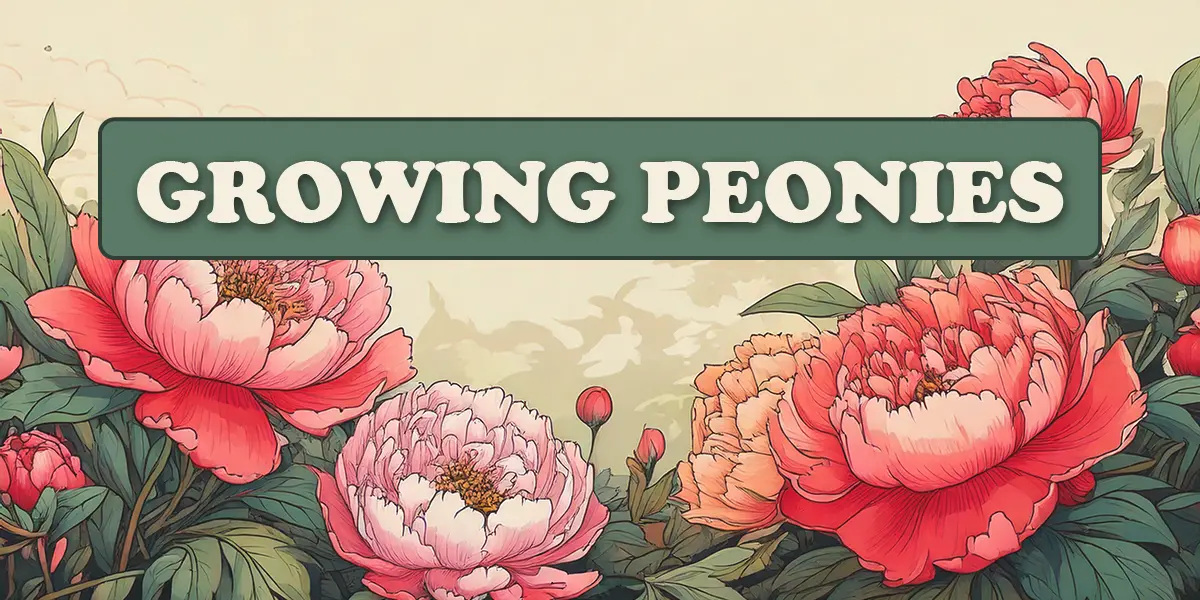First, a point of clarification: peonies are NOT cute little ungulates that girls love.
They’re showy, cool-weather flowering plants that often struggle in Southern California gardens.
Peonies are native to the chillier climes of Europe, America, and Asia. But if you have a hankering to grow them, we’ll show you how — even in LA’s balmy conditions.
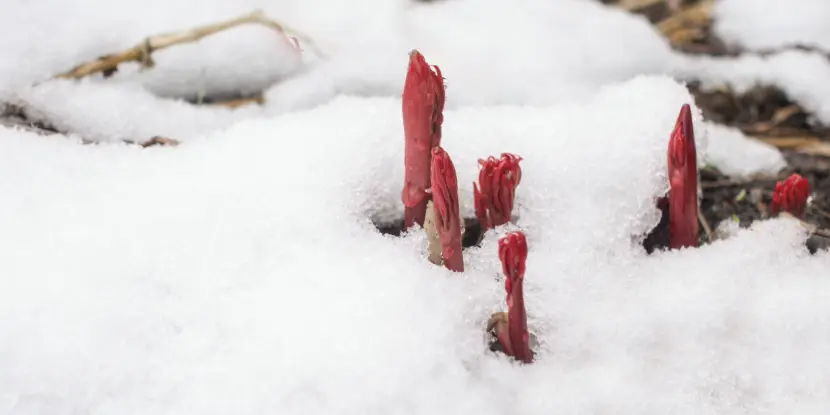
Brrr! Peonies are cool weather plants, but with care and the right variety, you can grow them in Southern California.
Best Peony Varieties for Southern California
Heat-tolerant varieties include:
- Sarah Bernhardt – A classic herbaceous peony with fragrant pink blooms.
- Festiva Maxima – Known for large, creamy-white flowers with red flashes.
- Coral Charm – Bears vibrant coral-colored blossoms that fade to peach.
- Itoh Peonies – A hybrid between herbaceous and tree peonies. These are ideal for warm climates and bloom prolifically.
Pro tip: Opt for early-blooming hybrids if you want flowers before temperatures rise in late spring.
Optimal Growing Conditions
Light
- Peonies need plenty of sunlight to produce their stunning blooms.
- For Southern California gardens, provide 6–8 hours of morning sun with afternoon shade to prevent heat stress.
- Too much shade can lead to poor flowering.
Temperature
- Choose varieties that require low chill hours (400–500 hours of cold weather).
- Southern California’s temperate climate means you must artificially mimic winter dormancy periods. Details to follow.
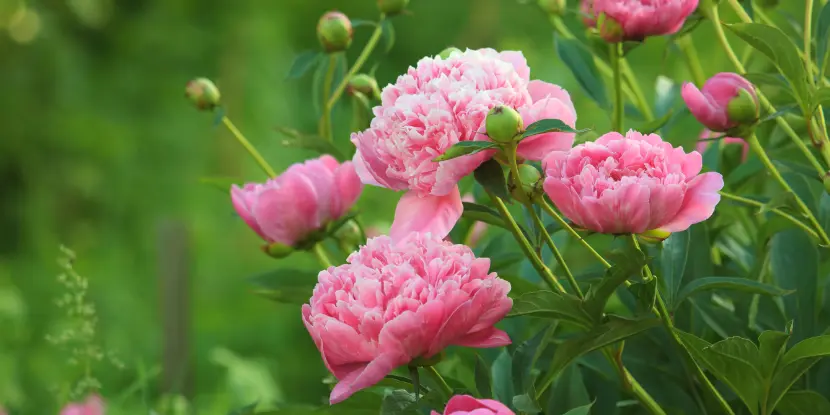
Pink peonies growing in the garden.
Soil
- Well-drained soil is a must; waterlogged roots will rot quickly.
- Aim for a pH of 6.5–7 (neutral to slightly acidic).
- Amend the soil with organic compost to improve drainage and add nutrients.
Propagating Peonies
From Roots
This is the most reliable way to grow robust peonies.
- Purchase root divisions (with 3–5 “eyes” or growth buds) in late fall.
- Dig a hole about 12–18 inches deep and amend the soil with compost.
- Place the root with the eyes facing upward, about 1–2 inches below ground level.
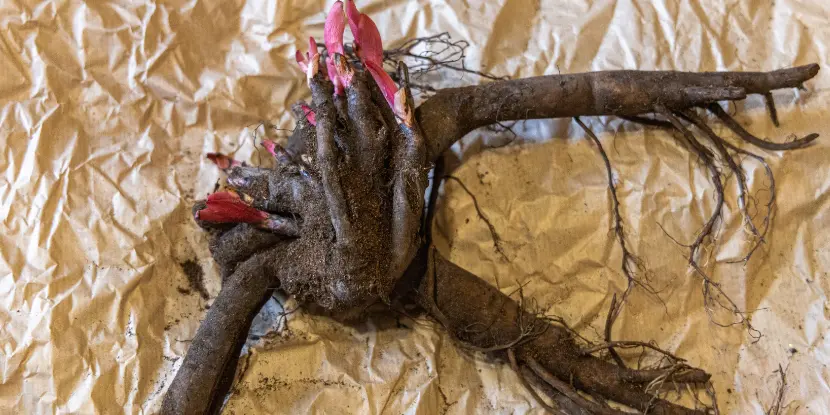
A peony root with sprouts, ready for planting.
From Cuttings
Less common but effective with tree peonies.
- Take semi-hardwood cuttings during summer or early fall.
- Dip the cut ends in a rooting hormone.
- Plant the cuttings in a well-draining potting mix and keep them moist.
From Seeds
The slowest method but rewarding for patient gardeners.
- Collect seeds from mature pods after flowering.
- Plant seeds in the fall for natural cold stratification.
- Expect germination to take 1–2 years, with flowers appearing in 4–5 years.
Steps for Planting Peonies
- Plant bare-root peonies in fall or winter.
- Add compost to the soil and ensure good drainage.
- Position the “eyes” (or buds) 1–2 inches beneath the soil surface.
- Water thoroughly after planting.
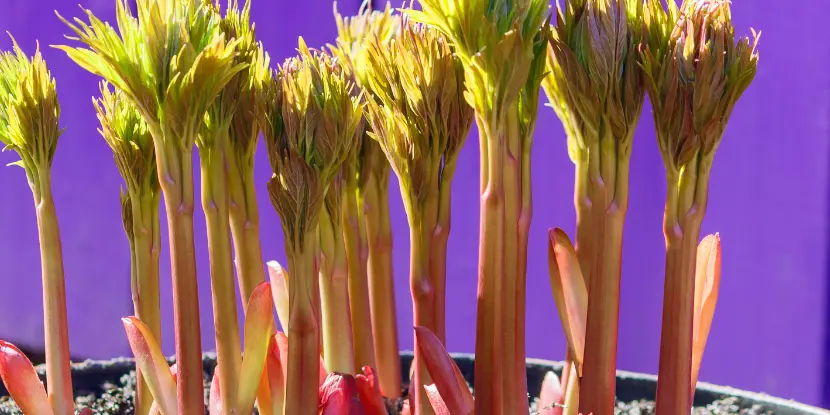
Sprouts of the “Marilyn Root” peony.
Caring for Your Peonies
Once planted, peonies are relatively low maintenance!
Water
- Water deeply once a week during the growing season. Adjust for rainfall.
- Avoid wetting the foliage to prevent diseases.
Fertilizer
- Feed your peonies in early spring once new growth appears.
- Use a balanced fertilizer (10-10-10), and avoid over-fertilizing, which may reduce blooms.
Pests & Diseases
- Peonies are occasionally susceptible to powdery mildew, botrytis blight, or verticillium wilt.
- Watch for signs of these diseases and treat them with fungicides or by removing affected parts of the plant.
- Peonies may also attract ants, which don’t harm the plants and can help with pollination.
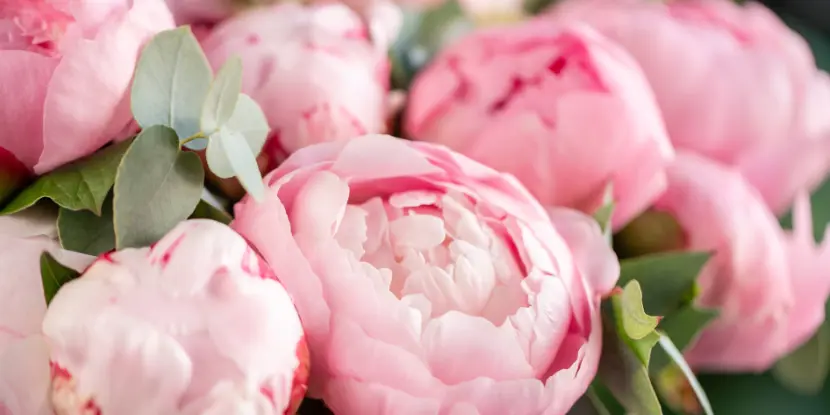
The large, showy blossoms of a pink peony.
Winter Care
- In colder regions, peonies will go dormant in the winter months.
- Mulch around the base of the plant with a layer of compost or organic matter to protect it from harsh winter temperatures.
- In warmer regions, peonies may benefit from light watering during dry spells.
Mimicking Winter Conditions
- Some peony varieties require a period of cold temperatures to bloom. This is called vernalization.
- If you live in an area with mild winters and your peonies aren’t blooming, try placing ice packs around the base of the plant for a couple of weeks before spring.
Dividing & Transplanting
Overcrowded peonies may produce fewer and smaller blooms.
- To avoid this, divide and transplant your peonies every 3–5 years in early fall, when the plant is dormant and easier to handle.
- Dig around the base of the plant and lift it out, taking care not to damage the roots.
- Gently shake off excess soil from the roots and use a sharp knife or garden shears to separate the clumps into individual plants.
- Before transplanting, verify that each division has at least 3 eyes (growth buds) on them.
- Replant in well-draining soil amended with compost or organic matter, ensuring the eyes are about 1 inch below the soil surface.
- Water thoroughly after transplanting and continue to water regularly, keeping the soil moist but not soggy.
- Mulch around the base of the plant to retain moisture and suppress weed growth.
Companion Planting for Peonies
Diversify your garden with companion plants that enhance your peonies’ beauty:
- Lavender for fragrance and low-maintenance greenery.
- Hostas for ground cover and shade to peony roots.
- Foxgloves for vertical interest and a cottage garden aesthetic.
- Clematis for a natural trellis and complementary colors.
- Lady’s Mantle for contrasting foliage and moisture retention.

Pink peonies in an elegant floral arrangement.
Harvesting Peonies for a Spectacular Floral Display
Peonies make exquisite cut flowers. To harvest for arrangements:
- Wait until the buds are marshmallow-soft (semi-open).
- Cut with sharp scissors, leaving several inches of stem.
- Place directly in clean water.
- Recut the stems every 2–3 days to extend vase life.
FAQs: Growing Peonies
Q: When is the best time to plant peonies?
In California, plant peonies as soon as temperatures are consistently below 70°F (21°C), usually in late fall. In colder regions, plant in early spring when the ground can be worked.
Q: How long does it take for a peony to bloom after planting?
Peonies typically establish and start blooming 2–3 years after planting. Depending on growing conditions and genetics, some varieties may bloom sooner or later.
Q: Can I cut back peony foliage in the fall?
Leave the foliage intact until after a hard frost or at least early winter. This allows the plant to store energy for next year’s growth. Afterward, cut back the stalks and remove leaves that have fallen off naturally.
Q: How often should I fertilize my peonies?
Apply an all-purpose fertilizer in early spring before new growth emerges. After the plant has bloomed, you can apply a second round of fertilizer to promote root and foliage growth for next year’s blooms.
Q: Do peonies need to be divided?
Not necessarily, but division can rejuvenate old plants and improve their bloom production. Divide your peonies in early fall after they’ve gone dormant. Dig up the entire clump and gently separate the roots into smaller sections with at least 3–5 eyes (buds) on each division before replanting them.
Q: Can I grow peonies in pots?
Yes, but choose a large pot (18–24 inches) and well-draining soil.
Q: Are peonies deer-resistant?
Mostly, but young shoots may need protection.
Q: How long do peonies bloom?
Most varieties bloom for about 7–10 days, but staggering different types can extend the season.

